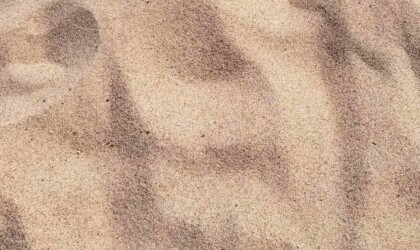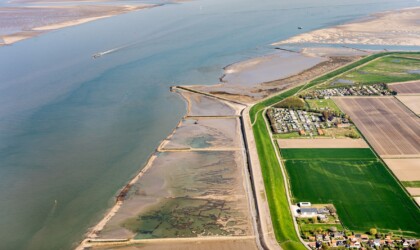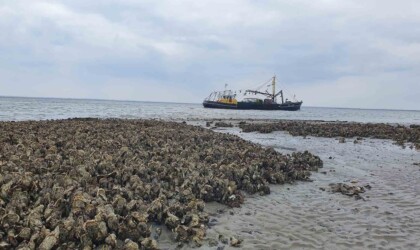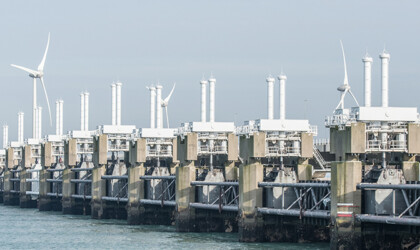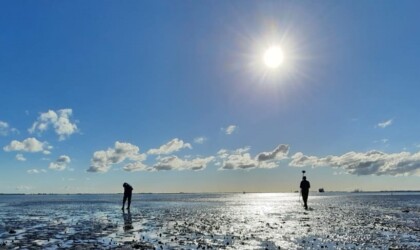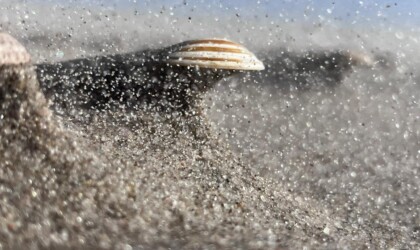In the Western Scheldt, current velocities have increased especially in recent years due to previous deepening and continuous dredging to maintain the channel for vessel traffic. In general, low-dynamic intertidal areas are richer in benthic life because here the current velocity is lower and the sediment more stable, which is important for the occurrence of various benthic animals.
As part of the Nature Package Westerschelde (NPW), the Province of Zeeland has implemented a number of tidal nature restoration projects in the Western Scheldt with measures outside the levees. These measures mainly focus on expansion and quality improvement of low-dynamic nature by constructing breakwaters or modifying channels. This type of nature restoration is being implemented in five areas. Currently these are Baalhoek1, Knuitershoek1, Bath2, Ossenisse2 and Zimmerman3 (1 = subject of prior in-depth monitoring; 2 = measures realised; 3 = measures in progress).
The objective of tidal nature restoration projects is to create low-dynamic sandy to moderately silt intertidal areas adjacent to a low-dynamic shallow water area. For these areas, the condition before construction of the breakwaters was characterised by increasingly hydrodynamically exposed peat banks and was therefore classified (wholly or largely) as a highly dynamic, ecologically poor area. The construction of breakwaters attempts to make the hydrodynamics lower energetic, causing silt and fine sand to sediment on and between the clay and peat banks.
Assessing the effectiveness of outer levee measures for habitat quality proves difficult. This is mainly due to the lack of an overarching framework or broad vision with clear criteria on the optimal functioning of tidal nature. For instance, when are areas outside the levees high enough for benthos and birds to function optimally? Does this depend on the relative height compared to nearby tidal areas? Understanding these relationships between current, morphology and ecological functioning will also help optimise future interventions outside the levees.
To evaluate the ecological effects of measures outside the levees, monitoring is important.
The overarching research objective is to answer the question:
Do current velocities and sedimentation processes in the project areas develop in such a way as to create valuable low-dynamic nature within the project areas?

